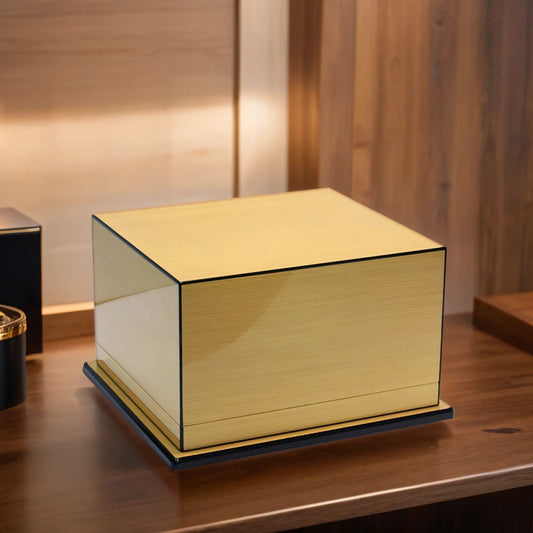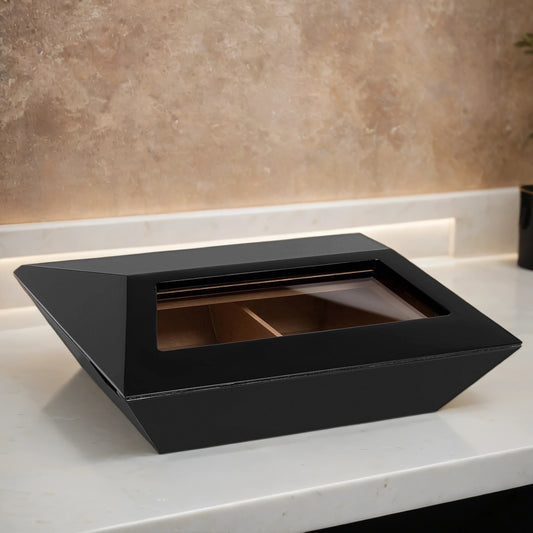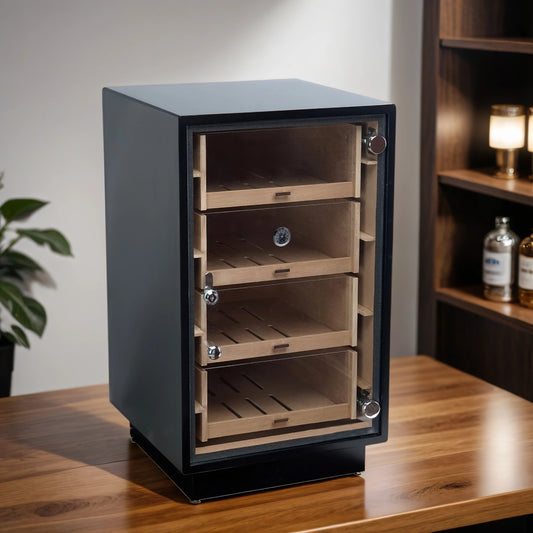
The Art of Cigar Making: From Seed to Smoke
Ever wondered how that luxurious stogie you enjoy came to be? Well, grab a seat and maybe a glass of your favorite whiskey, because we’re diving deep into the fascinating, and yes, somewhat manly process of cigar making. This isn't just about rolling some leaves; it’s about precision, tradition, and a whole lot of craftsmanship. Let’s break it down step by step.
The Beginning: Cultivation
The journey of a cigar starts in nurseries where tiny tobacco seeds are planted under protective layers of cheesecloth. These baby plants are pampered for 6 to 10 weeks before being transplanted into the fields. Think of it as sending your kid off to school – with a lot more dirt.
Tobacco Fields: Here’s where things get serious. Tobacco can be sun-grown or shade-grown. Sun-grown tobacco is like the bodybuilder of the plant world, robust and full of flavor, ideal for fillers and binders. Shade-grown tobacco, on the other hand, is the runway model – thin, delicate, and perfect for those smooth wrappers.
Types of Tobacco Plants: The stars of the show are the Habano and Criollo varieties. Each brings its own flair to the cigar’s final profile.
Harvesting and Curing
After months of soaking up the sun, these tobacco plants are ready to be harvested. This is where they start their transformation from leaf to luxury.
Curing: The leaves are hung in curing barns where they go through a controlled drying process. Over about 50 days, they change color from green to yellow to brown, sort of like the autumn leaves you rake up every year, except these are way more valuable.
Fermentation: Enhancing Flavor
Post-curing, the leaves are sorted and bundled for fermentation. Now, this isn’t your grandma’s pickling process. Fermentation in cigar making is where the magic really happens.
The Process: The leaves are stacked in large piles called pilones, where they ferment for months or even years. They’re turned and monitored to keep the right temperature and humidity. This is where they develop their rich flavors and aromas. Think of it as the cigars’ version of a fine wine aging process.

Stripping and Sorting
Next up, the leaves are stripped of their central veins and sorted into filler, binder, and wrapper categories. This ensures they’ll burn evenly and look just right.
Types of Leaves:
- Filler: This is the meat of the cigar, a blend of various leaves.
- Binder: A tougher leaf that holds the filler together.
- Wrapper: The outermost, most delicate leaf that gives the cigar its final flavor and appearance.
The Rolling Room: Crafting the Cigar
Here’s where the artistry kicks in. Skilled workers, known as torcedors, hand-roll each cigar with precision and care.
Hand-Rolled vs. Machine-Rolled:
- Hand-Rolled Cigars: These are the Ferraris of the cigar world. Each cigar is carefully bunched and wrapped by hand, ensuring a perfect draw and burn.
- Machine-Rolled Cigars: More like the reliable family sedan. They’re faster and cheaper to produce, but they lack the nuanced flavors of their hand-rolled counterparts.
The Process: Torcedors bunch the filler leaves, wrap them in a binder, and then roll them in the delicate wrapper leaf. The end result is finished off with a cap – sort of like the cigar’s hat.
The Science of Aging
After the cigars are rolled, they are placed in aging rooms with carefully controlled humidity and temperature. These conditions are crucial because they allow the different tobacco leaves—the filler, binder, and wrapper—to meld together harmoniously. During this time, the cigars are stored in cedar-lined rooms or cabinets, which not only help maintain the ideal humidity but also impart a subtle, complementary flavor to the tobacco.
Humidity and Temperature: Typically, the aging rooms are maintained at around 70% humidity and a temperature of 70°F (21°C). This balance prevents the cigars from drying out or becoming too moist, ensuring they age gracefully.
Smoothing the Smoke: Freshly rolled cigars can sometimes have harsh or sharp flavors. The aging process helps to mellow these harsh notes, producing a smoother and more enjoyable smoking experience. This is because the natural fermentation of the tobacco continues during aging, breaking down residual sugars and starches.
The Length of Aging
The duration of the aging process can vary significantly. Some cigars are aged for a few months, while others may be aged for several years. The length of aging depends on the type of tobacco used and the desired final flavor profile.
- Short-Term Aging (3-6 months): Often sufficient for many cigars, especially those made with milder tobaccos.
- Long-Term Aging (1-5 years): Typically used for premium cigars that aim to achieve a deeper, more complex flavor. Some cigars are aged for even longer to develop a truly unique and refined taste.

Quality Control: Ensuring Perfection
Quality control is no joke in cigar making. Each cigar is inspected to ensure it meets the brand’s high standards. If a cigar has even the slightest imperfection, it’s set aside—no second chances here. The inspection process is thorough and rigorous, involving multiple stages to catch any potential flaws.
First, the cigars are visually inspected for uniformity in size, color, and texture. Any discoloration, uneven wrapping, or visible veins can be grounds for rejection. This isn't just about aesthetics; inconsistencies can affect the burn and flavor of the cigar.
Next, each cigar is gently squeezed to check for the right amount of firmness. Too tight, and it won’t draw properly; too loose, and it will burn too quickly. This squeeze test ensures that the cigar has been rolled to the perfect density.
The cigars are also tested for weight to make sure each one is evenly filled. Any variations can lead to an uneven smoking experience, which is a big no-no for premium cigars.
The Final Touches: Banding and Boxing
Finally, the cigars are banded with their brand labels and carefully boxed. This not only makes them look good but also protects them during storage and transport. Think of the cigar band as a fancy bowtie—it adds a touch of class and distinction, making the cigar instantly recognizable. The band not only showcases the brand but also provides vital information about the cigar’s origin and blend.
Additional Insights
Different Types of Tobacco Leaves:
- Ligero: The powerhouse leaf from the top of the plant, providing strength and flavor.
- Seco: The middle leaf, offering balance in flavor.
- Volado: The bottom leaf, ensuring a smooth burn.
Cigar Components:
- Cap: The little round piece at the head of the cigar, cut before smoking.
- Head: The closed end you draw from.
- Foot: The open end you light.
- Cigar Band: The fancy label showing off the brand.
A Journey From Seed To Smoke
In essence, cigar making is a journey that combines meticulous craftsmanship, tradition, and patience. From the initial planting of tobacco seeds to the final aging process, each step is designed to create a cigar that offers a unique and enjoyable smoking experience.
The careful cultivation, curing, and fermentation of tobacco leaves ensure that each cigar develops rich, complex flavors. The skillful rolling by experienced torcedors ensures perfect construction, while rigorous quality control guarantees that only the best cigars make it past the aging rooms.
Finally, the cigars are banded and boxed, ready to be enjoyed by aficionados around the world. Understanding the intricate process behind each cigar enhances the appreciation of every puff. So, whether you're a seasoned aficionado or a curious newcomer, savor not just the smoke but the incredible journey it took to create your cigar. Cheers to the timeless art of cigar making!












